The first V1 prototype had continued on 17 test flights without crashing, yet they all must have been at a slow speed. The test pilot found that the plane was very maneuverable.
In light of the failures of other cutting edge projects, this was not a bad introduction. The flights were enabling sorting out of the jet engine problems.
One of the odd looking Luftwaffe plane to take the blue skies was the Junkers Ju 287.
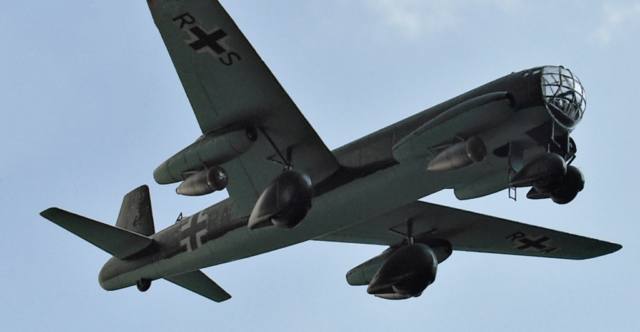
This had begun early in the year of 1943, when the Ju 287 incorporated countless advanced aerodynamic ideas; the most striking was the swept forward wings. This design feature had been deemed comprehensive enough to warrant the construction of a test bed plane.
The test bed flew on the date of August 16th, 1944. The plane had been a Frankenstein’s monster, it was pieced together from many different planes. This included the nose wheels from the two B-24 Liberators, the fuselage from the HE 177, main wheels from a Ju 352, and lastly a tail constructed from Ju 388 parts.
The Junkers JU 287 had been a Nazi Germany aerodynamic test bed that was created to develop the technology that required a multi-engine jet bomber. It had been powered by four Junker Jumo 004 engines, which featured the revolutionary forward-swept wing.
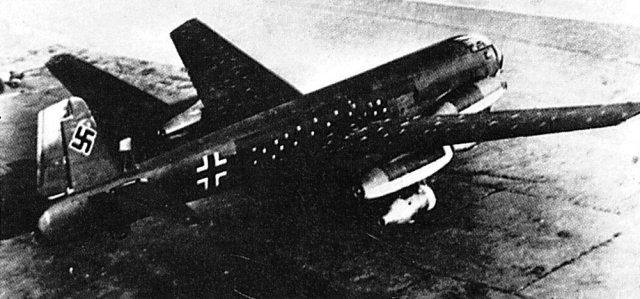
The incomplete second and third prototypes, which far more accurately reflected the design of the final production bomber, was captured by the Red Army during the closing stages of WWII and the design was further developed inside the Soviet Union after the war ended.
The Ju 297 had been intended to provide the Luftwaffe with a bomber that was able to avoid interception by outrunning enemy fighters.
The swept forward wing had been suggested by the project’s lead designer, Dr.Hans Wocke. This was a way to providing extra lift at low airspeeds. This was necessary for the reason that of the bad responsiveness of the early turbojets that were vulnerable at the time of takeoff and the landing.
The further structural advantage of the forward swept wing had been that it would allow for a single large weapons bay that was forward to the main wing spar.
Before the assembly of the first Ju 287, the He 177 A-5 was altered at the Letov plant that was located in Prague to analyze the technical characteristics of this single huge bomb bay design.
The first prototype had been intended to evaluate the idea. It was assembled from the fuselage of the HE 177 A-5, the tail of a Ju 388, the main undercarriage from the Ju 352, and also the nose wheels from a crashed B-24 Liberators.
Two of the Juno 004 engines were hung under the wings, while the other two were mounted in the nacelles and added to the sides of the forward fuselage.
The flight tests started on the date of August 16th, 1944. The plane was displaying handling characteristics very well; it also revealed some of the issues of the forward swept wing that was under some flight conditions.
The most noteworthy of these drawbacks was the wing warping, or immoderate in flight flexing of the wing assembly and main spar.
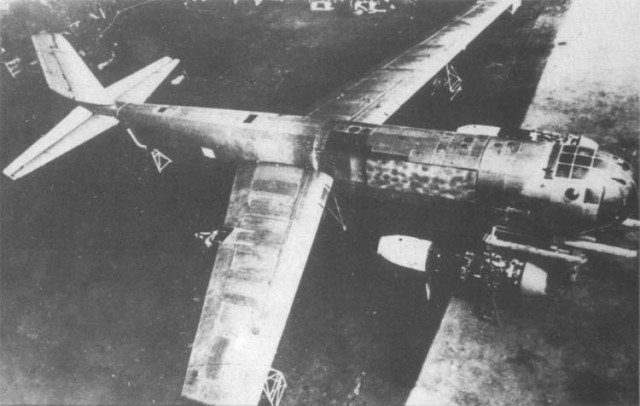
The tests proposed that the warping issues could be eliminated by concentrating a greater engine mass underneath the wings. This technical improvement would be merged in the following prototypes. The 287 had been meant to be powered by four of the Heinkel-Hirth HeS 011 engines, but they were not used due to development issues experienced with the engine.
The BMW 003 had been chosen in its place. The second and third models, V2 and V3, employed six of these engines in a triple cluster under each wing. Both of the planes were to feature the all new fuselage and tail design that was meant for the production bomber, the Ju 287-1. The V3 was to have functioned as the pre-production model; it carried defensive artillery, a pressurized cockpit and full serviceable equipment.
Work that was being done on the Ju 287 program that was along with all other pending German bomber projects came to a stop in July of 1944, but Junkers was allowed to go forward with the flight testing procedure on the V1 model. The wing section for the V2 was finished by that time.
Seventeen test flights were taken in total, which passed without any notable incident.
Small problems, although, did develop with the turbojet engines and the RATO booster units, which proved not to be reliable over continuous periods. The first test phase had been designed solely to assess the low-speed handling caliber of the forward swept wing, yet regardless of this, the V1 had been dived at complete jet power on at least one occurrence.
This attained a speed in the medium dive angle of 660 kilometers per hour (kph). To gain data on the airflow patterns, small woolen tufts were attached by being glued the airframe.
The behavior of these tufts throughout the duration on the flight had been captured by a video camera that was mounted on a sturdy tripod straight in front of the plane’s tailfin.
Afterwards, the seventeenth and final flight during late autumn of the year 1944, the V1 had been placed in storage, and the Ju 287 program came to what was at the time believed to be its end. Although, in March of 1945, for reasons that are not very clear, the 287 program had been restarted, with the RLM issuing a requirement for large production of the jet bomber as soon as they could.
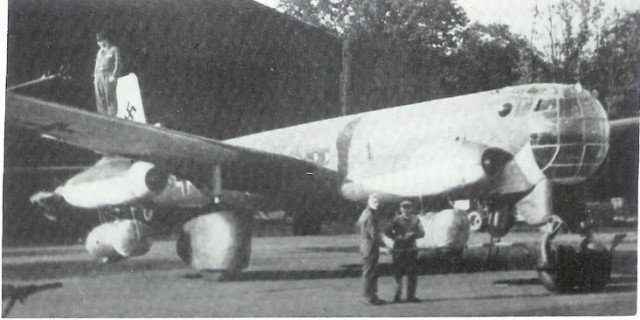
The V1 model had been taken out of storage and moved to the Luftwaffe evaluation center located at Rechlin. Yet it had been destroyed in an Allied bombing raid before it was able to take air again. Building on the V2 and V3 models had resumed at the Junkers factory close to Leipzig, and the intended future different designs were dusted off.
These included the Ju 287B-1, seeing the return of the original power plant choice of four 2,900 pound thrust HeS on turbojets. The B-2, which was to have engaged two 7,700 pound thrust BMW 018 turbofans.
While the Heinkel turbojet had been in the pre-production phase at the war’s end, work on BMW’s radical and collectively powerful turbine engine, which never proceeded past the blueprint phase. The final Ju 287 different design that was to be raised was a Mistel combination plane ground attack type. This comprised of an unmanned explosive-packed drone 287 and a manned Me 262 fighter being attached to the top of a bomber by a strut assembly.
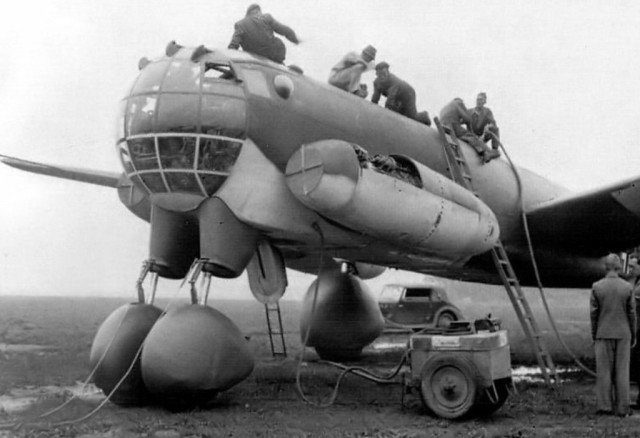
The cockpit of the 287 would be replaced by a huge impact fused warhead. The takeoff and flight control of the combination would be under the control of the 262’s pilot.
The 262 would withdraw from the 287 drone as the Mistel was closer to its target. The pilot of the fighter would be remotely steering the 287 for the terminal stage of its strike mission.
The Junkers factory building that was holding the V2 and V3 had been taken over by the Red Army during late April in 1945. At that point in time, the V2 had been 80% finished, and construction for the V3 had just started.
Wocke and his staff were taken along with two incomplete models and were brought to the Soviet Union.
Read another one from us: XP-55 – A highly unusual World War II aircraft design
There, the third model had been sooner or later completed and flown on the date of May 23rd, 1947. Yet by that time, jet development had overtaken the Ju 287. The final enlarged derivative, the EF 140, was tested in model form in the year of 1940 but soon after was abandoned.
